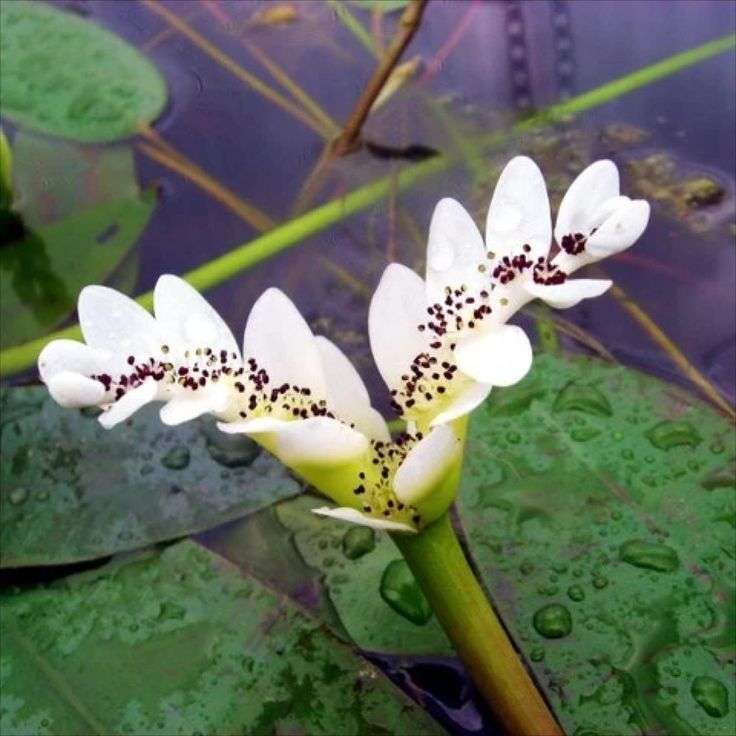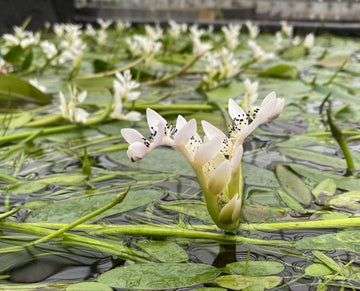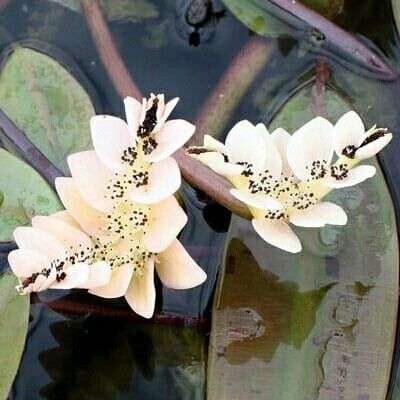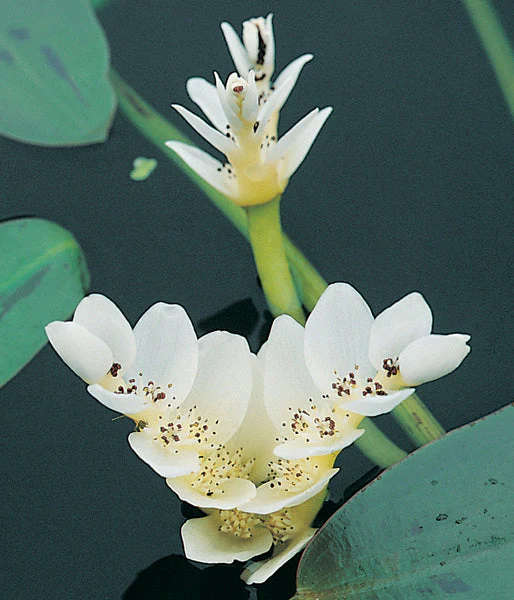







Waterblommetjies - 5 bulbs p-pack
Check my rate
| Main centres: | 1-3 business days |
| Regional areas: | 3-4 business days |
| Remote areas: | 3-5 business days |








| Main centres: | 1-3 business days |
| Regional areas: | 3-4 business days |
| Remote areas: | 3-5 business days |
Waterblommetjies, also known as Cape pondweed or Water Hawthorn, are aquatic plants native to South Africa. They are well known for their delicious edible flowers, commonly used in the famous Waterblommetjie Bredie (stew). These plants thrive in freshwater ponds, dams, and slow-moving streams, making them an ideal crop for wetland or aquaponic cultivation.
Climate:
Best suited to Mediterranean climates, particularly the Western Cape, where they naturally grow in winter rainfall areas.
Can be grown in other regions if provided with a constant water source and seasonal flooding.
Grows actively during cooler months (autumn to spring, March—October) and goes dormant in hot summers (November—February).
Water Requirements:
Needs still or slow-moving, fresh water about 30—50 cm deep.
Dams, ponds, canals, and shallow water bodies are ideal growing locations.
If growing in a container, use a large tub or half-drum filled with freshwater.
Soil Requirements:
Prefers muddy, nutrient-rich soil at the bottom of a shallow pond.
Use a loamy or clay-rich soil with added compost for nutrients.
If growing in containers, use heavy garden soil with organic matter (not sandy or light soil, as it may float away).
Best Planting Time:
Autumn (March—May), when temperatures begin to cool, and rainfall increases.
This allows the plants to establish themselves before winter.
Planting Methods:
From Bulbs/Tubers:
Place tubers or rhizomes about 5—10 cm deep in the mud at the bottom of a pond.
Space plants 30—50 cm apart for proper growth.
From Seeds:
Seeds can be scattered directly into the shallow water of a pond.
Germination occurs naturally in cool, wet conditions.
Depth Considerations:
Water depth should be 30—50 cm.
If water is too deep, the plants may struggle to reach the surface.
Watering:
Keep plants submerged in shallow water at all times.
If water levels drop in summer, refill manually to prevent the plants from drying out.
In dry regions, maintain water levels artificially using irrigation or aquaponic systems.
Fertilizing:
If growing in nutrient-poor soil, add organic compost or aquatic plant fertilizer in early autumn.
Avoid excessive fertilization, as this can lead to algae overgrowth in ponds.
Mulching:
No need for mulch, but aquatic plants like duckweed or azolla can help maintain water quality.
Common Pests:
Aphids — Can attack leaves; rinse off with water or use organic insecticidal soap.
Snails and Slugs — Can eat young shoots; control manually or use natural predators like ducks.
Common Diseases:
Algae Overgrowth — Occurs in stagnant water with excess nutrients. Prevent by maintaining water flow or introducing aquatic plants.
Fungal Infections — Rare but can occur if water is polluted. Ensure clean water sources for optimal growth.
Best Harvesting Time:
Flowers and buds are ready for harvest in late winter to early spring (July—September).
Harvest before they fully open for tender, flavorful blooms.
How to Harvest:
Use clean hands or shears to gently pick young, unopened buds.
Avoid taking too many flowers from each plant to ensure continuous growth.
Storage & Usage:
Can be stored fresh in the fridge for up to 3 days.
Can be blanched and frozen for long-term storage.
Best used fresh in stews (bredies) or as a vegetable dish.
Dormancy Cycle:
In hot summers (November—February), waterblommetjies die back naturally.
The plants resprout from tubers when cooler, wetter conditions return.
If growing in containers, keep the soil moist to prevent tubers from drying out.
Replanting:
In permanent ponds, waterblommetjie...